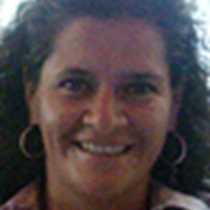San Cristobal Island
This morning we visited Punta Pitt, where the beach is made out of olivine – incredibly soft green sand, the result of eroded particles of the hardest crystals and minerals that make a lava flow. The little beach transported us to an enchanted kingdom which was completely surreal; the glittering sparkles of crystals seemed to be the result of a fairy flying around here…
San Cristobal one of the very old islands of the Galápagos group, where places like Punta Pitt that are made out of tuff or volcanic ash are quite common. As we walked up throughout the canyon we could not be more amazed at how these magnificent formations had formed, all as a result of one volcanic event. The meeting of the hot boiling lava with the cold temperatures of the ocean produce steam that eventually compacts up, making layers and layers of material that would eventually erode and make the sand of the nearby beaches.
A small colony of red-footed boobies surprised us at the end of the trail, birds facing the difficult conditions of the season while patiently taking care of the single egg on their nests. Perching by itself on a solitary branch we found one fully-grown adult with red feet that had to be photographed!
In the afternoon, as we got into the water around Leon Dormido, or Kicker Rock, and a school of Galápagos sharks welcomed us for our very last snorkel of the week. Sea lions, sea turtles, and different species of Galápagos reef fish kept us swimming around these spectacular lava formations that are San Cristobal’s signature.
What an incredible week we have all had on board the National Geographic Endeavour, cruising around the living laboratory of evolution. We return home having witnessed why we humans need to keep this place the way it is; the enchanted archipelago is one of the last paradises on earth and all future generations have the right to see it too.




